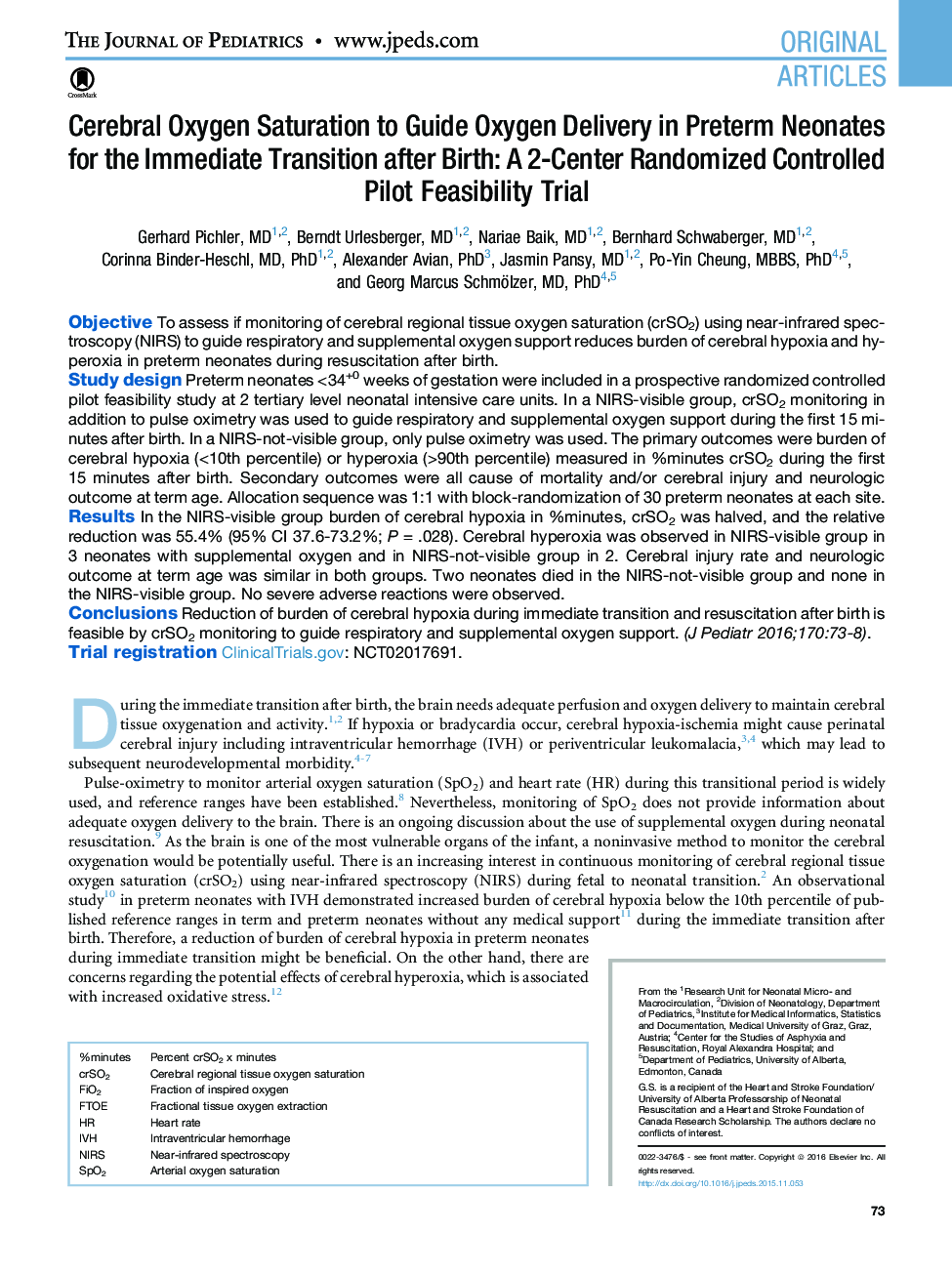| کد مقاله | کد نشریه | سال انتشار | مقاله انگلیسی | نسخه تمام متن |
|---|---|---|---|---|
| 6219061 | 1607432 | 2016 | 10 صفحه PDF | دانلود رایگان |
ObjectiveTo assess if monitoring of cerebral regional tissue oxygen saturation (crSO2) using near-infrared spectroscopy (NIRS) to guide respiratory and supplemental oxygen support reduces burden of cerebral hypoxia and hyperoxia in preterm neonates during resuscitation after birth.Study designPreterm neonates <34+0Â weeks of gestation were included in a prospective randomized controlled pilot feasibility study at 2 tertiary level neonatal intensive care units. In a NIRS-visible group, crSO2 monitoring in addition to pulse oximetry was used to guide respiratory and supplemental oxygen support during the first 15Â minutes after birth. In a NIRS-not-visible group, only pulse oximetry was used. The primary outcomes were burden of cerebral hypoxia (<10th percentile) or hyperoxia (>90th percentile) measured in %minutes crSO2 during the first 15Â minutes after birth. Secondary outcomes were all cause of mortality and/or cerebral injury and neurologic outcome at term age. Allocation sequence was 1:1 with block-randomization of 30 preterm neonates at each site.ResultsIn the NIRS-visible group burden of cerebral hypoxia in %minutes, crSO2 was halved, and the relative reduction was 55.4% (95% CI 37.6-73.2%; PÂ =Â .028). Cerebral hyperoxia was observed in NIRS-visible group in 3 neonates with supplemental oxygen and in NIRS-not-visible group in 2. Cerebral injury rate and neurologic outcome at term age was similar in both groups. Two neonates died in the NIRS-not-visible group and none in the NIRS-visible group. No severe adverse reactions were observed.ConclusionsReduction of burden of cerebral hypoxia during immediate transition and resuscitation after birth is feasible by crSO2 monitoring to guide respiratory and supplemental oxygen support.Trial registrationClinicalTrials.gov: NCT02017691.
Journal: The Journal of Pediatrics - Volume 170, March 2016, Pages 73-78.e4
